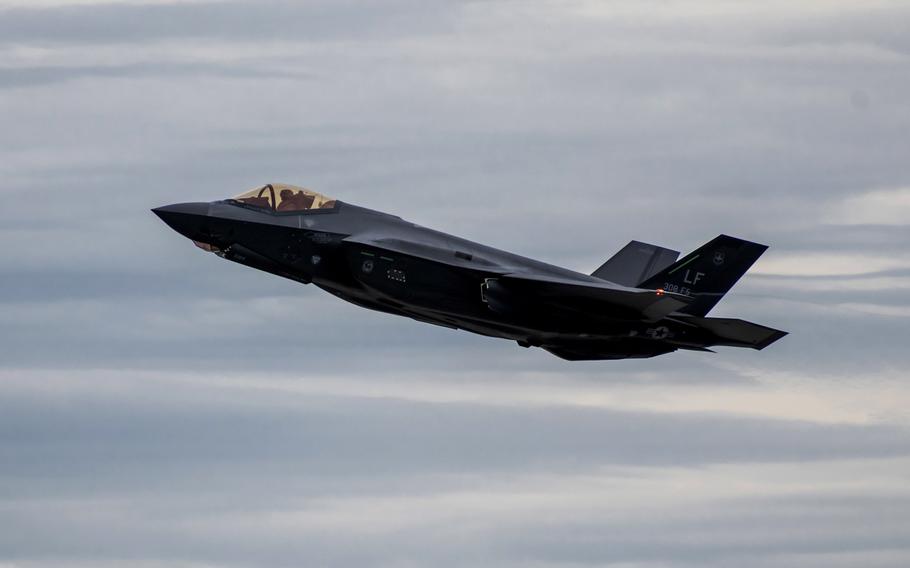
An F-35A Lightning II takes off from Dover AFB, Del., Feb. 19, 2020. Eight F-35A jets originally destined for Turkey will now go to the U.S. Air Force, after Turkey was removed from the stealth fighter program over its purchase of a Russian anti-aircraft system. (Christopher Quail/U.S. Air Force)
The U.S. Air Force will acquire eight F-35A jets originally destined for Turkey after that country was removed from the stealth fighter program over its decision to purchase a Russian anti-aircraft system, the Pentagon said.
Under an $861.7 million contract modification issued by the Defense Department on Monday, the eight Turkish F-35A Lightning II jets, which have been in storage for nearly a year, will be purchased by the Air Force, the DOD said on its website.
The modified contract also includes six additional F-35As from the same production lot, as well as funding for modifications to bring the jets ordered by Turkey into line with U.S. Air Force specifications, it said.
Turkey was one of the original foreign customers for the F-35, which is built by Lockheed Martin. It planned to buy about 100 of the fifth-generation jets.
But it was booted from the program in July last year after Ankara went ahead with a plan to purchase Russia’s S-400 long-range anti-aircraft system.
U.S. officials feared Russia could use the S-400 system to gather intelligence on the F-35 and possibly compromise its stealth technology, and had repeatedly warned Turkey that it would face punishment if it acquired the anti-aircraft system. NATO officials also advised member state Turkey against the S-400, saying it was incompatible with other alliance systems.
Since it was expelled from the F-35 program, the Turkish government has said it could replace the American jets with aircraft made elsewhere.
Last year, Turkish and Russian officials held talks in Moscow about working together to develop a fifth-generation fighter jet, Russian media reported.
Russia and China both have limited numbers of domestically developed new stealth fighters, and NATO members France, Germany and Spain in May took another step toward developing a European next-generation fighter jet when they agreed on performance benchmarks for a new system. The European jet is not expected to be completed before 2040.